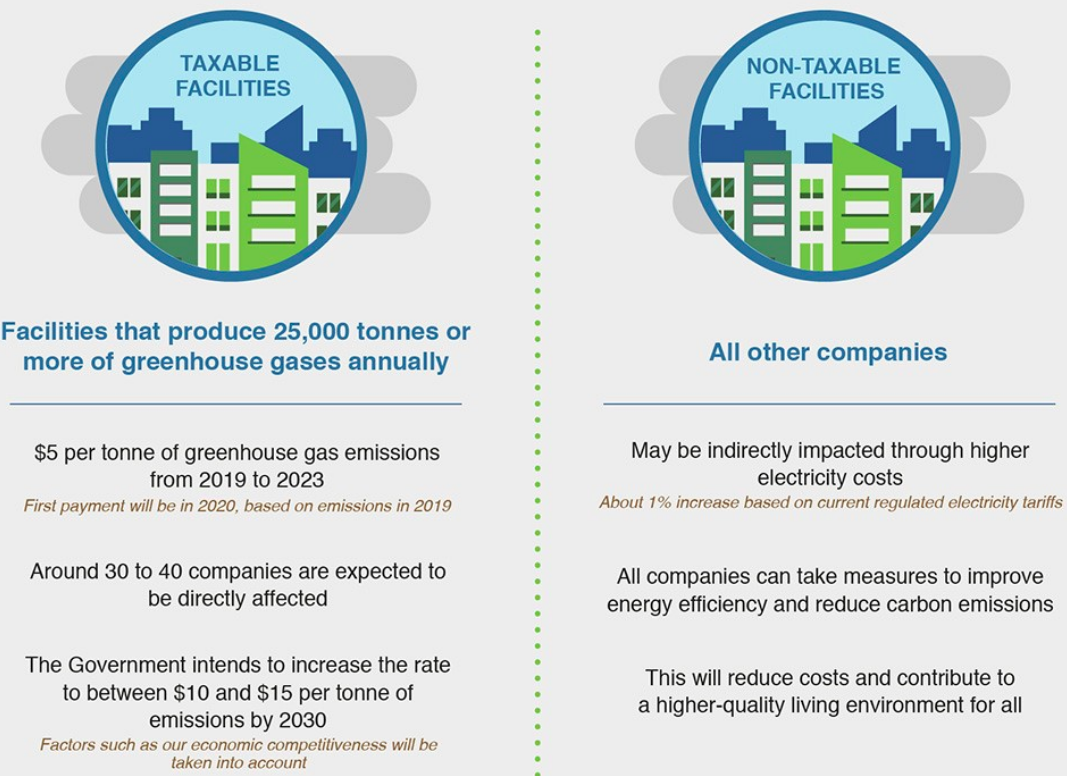Environment and Water Resources Minister Masagos Zulkifli announced that 2018 will be Singapore’s Year of Climate Action. I will be discussing some of the major governmental initiatives under this plan. They seem to focus primarily on external factors of behaviour.
1. Carbon tax
- Reinforcement: By implementing carbon taxes, it brings about greater costs to the industries – of performing the unwanted behaviour of generating emissions. There could also be a trickle-down effect on consumers. Households could be charged 1% more on their electricity bills. This punishment will lead to curtailment behaviours – industries will limit the emissions produced. Households might reduce their electricity consumption.
- Externalities: Industries are not willing to pay for the external costs generated to the environment e.g. emissions, but only for any value they receive. Hence, facilities that generate more than 25,000 tonnes annually have to pay carbon tax. They are charged for use of environmental resources – environmental economics.
2. Financing Energy Efficiency Improvements
- Incentives: Grants will help to fund “green technology” investments. They could motivate industries to make such investments. Industries can be more efficient by using fewer resources for the same production level. Once this technological choice is made, it generates continued value. E.g. The Energy Efficiency Fund (E2F) provides up to 50% of the qualifying costs, capped at $600,000 for industries that undergo workshops to integrate resource efficiencies into their manufacturing facilities. They seemed to have made used of the key principle in designing effective incentives – large enough but not excessive (Law of diminishing returns). Workshops make the incentives more effective by tying in an informational component as well. Incentives were also matched to barriers that prevented action i.e. lack of knowledge, motivation and finances to be energy efficient.
3. Emissions Reporting Enhancements
- Industries are required to report their emission levels to National Environmental Agency (NEA): “Taxable facilities” which emit more than 25,000 tonnes annually must submit an emissions report that is verified by an independent third party and based on a monitoring plan. Facilities which emit more than 2,000 tonnes but less than 25,000 tonnes of greenhouse gases annually must continue to submit an emissions report, in line with the Energy Conservation Act. There is also a feedback function: External parties will be monitoring industrial behaviours. If the authorities find that an emissions report is inaccurate or incomplete, they can direct the facility to rectify the document and resubmit it.
4. Regional Cooperation
Singapore actively collaborates with regional and international partners to exchange best practices on climate change and sustainable development.
- Goals: Work best with feedback (point 3 above) towards the level of achievement we can make towards climate change. Hence, the Singapore Government sets goals to provide a clear direction of what to achieve:
ASEAN Plan of Action for Energy Cooperation 2016‐2025
- By 2020, to have reduced energy intensity in ASEAN by 20% from 2005 levels.
- By 2025, to have increased the component of renewable energy in the ASEAN energy mix to 23%.





